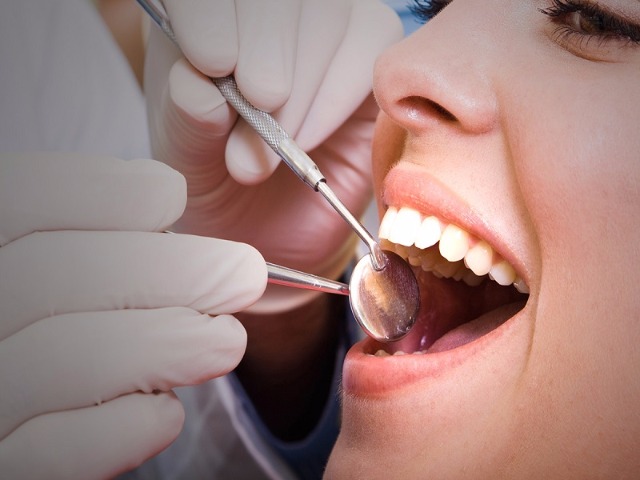A beautiful smile is more than just a cosmetic asset; it’s a reflection of good oral health and overall well-being. If you’ve ever considered orthodontic treatment, you’re not alone. Many people seek orthodontics to correct misaligned teeth and enjoy the numerous benefits that come with a straighter smile. In this blog post, we’ll explore the world of orthodontics, from its role in dental health to the aesthetic improvements it offers.
What Is Orthodontics?
Orthodontics is a specialized branch of dentistry that focuses on diagnosing, preventing, and correcting misaligned teeth and jaws. Orthodontists are highly trained dental professionals who specialize in assessing and treating malocclusions, which are issues related to the alignment of teeth and jaws.
The Importance of Straight Teeth
Having straight teeth goes beyond cosmetic concerns; it plays a significant role in your dental health and overall well-being. Here are some reasons why straight teeth matter:
1. Better Oral Hygiene
Straight teeth are easier to clean than crowded or misaligned teeth. When your teeth are properly aligned, brushing and flossing can reach all surfaces effectively, reducing the risk of plaque buildup, cavities, and gum disease.
2. Improved Bite Function
A proper bite is essential for chewing and speaking comfortably. Misaligned teeth or jaw problems can lead to difficulties in these areas. Orthodontic treatment can help improve your bite function, making eating and communication more comfortable.
3. Lower Risk of Dental Issues
Straight teeth are less likely to experience dental problems like chipping, excessive wear, and jaw strain. They are also less prone to injuries, as they are less likely to protrude.

4. Enhanced Confidence
A straight smile can boost your self-esteem and confidence. Feeling good about your smile can have a positive impact on your personal and professional life.
Orthodontic Treatment Options
Orthodontic treatment has come a long way, offering various options to suit different needs and preferences. Some of the most common orthodontic treatments include:
1. Traditional Braces
Traditional metal braces consist of metal brackets affixed to the teeth and connected by wires. They are highly effective for correcting complex misalignments and bite issues.
2. Ceramic Braces
Ceramic braces are similar to traditional braces but use clear or tooth-colored brackets, making them less conspicuous. They offer the benefits of traditional braces with a more discreet appearance.
3. Invisalign
Invisalign is a popular choice for those seeking a more discreet orthodontic treatment. It uses a series of clear, removable aligners to gradually shift teeth into their desired positions. Invisalign is highly effective for mild to moderate misalignments.
4. Lingual Braces
Lingual braces are placed on the inside (lingual side) of the teeth, making them virtually invisible. They are an excellent option for those who want the effectiveness of traditional braces without the visibility.
5. Retainers
Retainers are often used after orthodontic treatment to maintain the newly aligned teeth. They can be removable or fixed behind the teeth (lingual retainers).
The Orthodontic Process
If you’re considering orthodontic treatment, here’s an overview of what to expect during the process:
1. Initial Consultation
Your orthodontic journey begins with an initial consultation. During this visit, the orthodontist will assess your oral health, discuss your concerns, and recommend the most suitable treatment options.
2. Treatment Plan
Once you’ve decided on a treatment plan, the orthodontist will create a detailed treatment plan tailored to your specific needs. This plan outlines the steps, timeline, and expected results of your orthodontic treatment.
3. Getting Started
Depending on your chosen treatment, you’ll receive your braces, aligners, or other orthodontic appliances. The orthodontist will explain how to care for your braces or aligners, along with any dietary restrictions.
4. Regular Appointments
Throughout your treatment, you’ll have periodic appointments with your orthodontist for adjustments, progress checks, and any necessary modifications to your treatment plan.
5. Retention Phase
After completing your primary orthodontic treatment, you’ll enter the retention phase. This involves wearing retainers to ensure your teeth maintain their newly aligned positions.
Life with Orthodontics
Orthodontic treatment requires commitment, but the benefits far outweigh the temporary inconveniences. Here are some tips for making the most of your orthodontic journey:
1. Maintain Good Oral Hygiene
Proper oral hygiene is essential when you have braces or aligners. Brush and floss diligently, and follow your orthodontist’s recommendations for cleaning your orthodontic appliances.
2. Attend Regular Appointments
Don’t skip your orthodontic appointments. Regular check-ups are crucial for monitoring progress and making necessary adjustments.
3. Follow Dietary Guidelines
Certain foods can damage braces or hinder Invisalign treatment. Follow your orthodontist’s dietary guidelines to avoid complications.
4. Be Patient
Orthodontic treatment takes time, but the results are worth it. Be patient and trust the process.
5. Wear Your Retainer
After your primary treatment, wearing a retainer is essential to maintain the results. Follow your orthodontist’s instructions regarding retainer use.
Conclusion: A Lifetime of Benefits
Orthodontic treatment is not just about achieving a beautiful smile; it’s about ensuring good oral health and overall well-being with the help of Tirunelveli’s top dental clinic. Straight teeth are easier to care for, function better, and contribute to greater self-confidence. If you’re considering orthodontic treatment, consult with an orthodontist to explore your options and embark on a journey toward a healthier, happier smile that lasts a lifetime. Remember, a straighter smile is not just about aesthetics – it’s about improving your quality of life.







